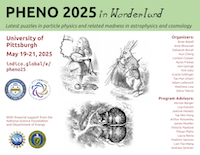Speaker
Description
Some of the most stringent constraints on axions arise from considerations of it's emission from astrophysical plasmas. However, many studies assume that particle production occurs in an isotropic plasma environment. This condition is rarely (if ever) met in astrophysical settings, for instance due to the ubiquitous presence of magnetic fields. The effects of the magnetic fields are only taken into consideration for writing down the coupling $g^2 B^2$ while their impact on plasma dispersion are less explored in the context of axion production. In magnetized plasmas, the equations of motion are not diagonal in the usual polarization basis of transverse and longitudinal modes, causing a mixing of these modes and breaking the degeneracy in the dispersion relation of the two transverse modes. This behavior is captured by projecting the response tensor of the plasma $\Pi^{\mu\nu}$ into mode space, whose eigenvectors and eigenvalues are related to the normal modes and their dispersion relations. In this talk, I will discuss a general formalism for determining the normal modes of propagation that are coupled to axions in an anisotropic magnetized plasma. I will provide analytic approximations for the normal modes and their dispersion relations assuming various plasma conditions that are relevant to astrophysical environments. Finally, I will briefly discuss how these modified dispersion properties affect the axion production rate in a magnetized plasma.

